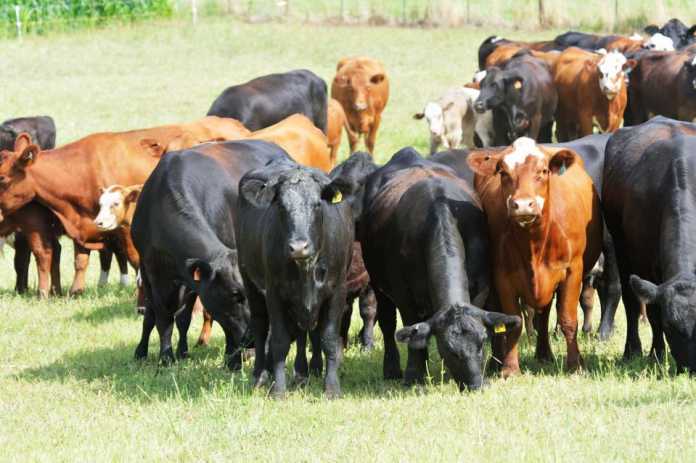There are various diseases that can be transmitted across to humans from farm animals and which farmers must take precautions against through vaccination.
Most of these vaccines are produced locally by the Kenya Veterinary Vaccines Production Institute (KEVEVAPI) which is a government parastatal in the Ministry of Agriculture, Livestock and Fisheries. These diseases are the main subject of our discussion this week.
BRUCELLOSIS
Brucellosis in humans is known as undulant fever because of the severe intermittent fever accompanying human infection or Malta fever because it was first recognised as a human disease on the island of Malta. This disease is normally confused with malaria.
Man is infected through consumption of raw milk and milk products from infected animals. Initial symptoms include fatigue, headache, fever, chills, sweating, joint pains, backache, loss of weight in chronic cases depression, recurrent fever and arthritis.
In animals the disease is known as contagious abortion or Bang’s disease. Brucellosis is primary a disease for cattle, pigs, sheep, goats and dogs.
In animals brucellosis is mainly transmitted through contact with infected animals or a contaminated environment. Contamination can occur through body fluid or discharges from affected animals, aborted feotuses, placental membranes that either get into water or animal feeds. Cows can also get infectious material through licking genital areas of affected animals (this is common with bulls). Bulls get infection and transmit it through mating.
Currently there is no effective cure for brucellosis; occasionally animals heal by themselves hence vaccination is the only cure.
RIFT VALLEY FEVER
Rift Valley Fever is a viral disease of cattle, sheep, goats and camels and can be spread to man. In animals it is spread by mosquitoes while human beings get infected by contact with infected carcass or fluid from sick animals. The disease follows a sudden increase in mosquito populations which are normally observed during prolonged rainy seasons or in areas where large pools of water are suddenly introduced for example during construction of dams or in irrigation fields. The disease owes its name to Kenyan Rift Valley where it was first reported in 1910; various outbreaks have since been reported across the globe.
In human beings the disease is characterised by signs of flu, fever, fear of light, reddening of eyes and can result in death and is spread through contact with body fluids and carcasses of animals that have succumbed to RVF.
In animals, the disease is characterised by abortions and deaths in young stock and sheep. Bloody diarrhoea, jaundice, depression, lack of appetite, excess nasal and eye discharge are other signs. This disease can be effectively prevented through vaccination of the animals; efforts to develop a human vaccine are still at trial stages.
ANTHRAX
Anthrax is a bacterial disease affecting both man and animals; it has been used or rather abused in bioterrorism. Anthrax commonly affects cattle, sheep, goats, pig, dogs and camels. The causative agents can remain infective in soil for many years and outbreaks are common during dry seasons when animals graze very close to the ground. Biting flies can also transmit the disease in animals mechanically.
In man, the disease takes several forms depending on mode of infection; the skin form is caused through contact with contaminated carcasses or animal products, the gastro-intestinal form is caused by consumption animal products or by eating contaminated raw or undercooked meat. The most fatal form of the disease also called wool sorters disease is caused through inhalation of bacterial spores.
Anthrax can take a short or prolonged form.
The short (acute) form is common in sheep, goat and cattle and is characterised by fever, reduced milk production in lactating animals, pregnant animals may abort convulsions, difficulty in walking and breathing and sudden death. After death blood may ooze from all body openings. Suspected animals must never be slaughtered for consumption and must be buried six fit under or burnt to ashes.
Anthrax can be prevented or controlled through annual vaccination programmes and imposition of quarantine where the disease is reported.
FOOT AND MOUTH DISEASE (FMD)
It is a highly infectious viral disease that can affect cattle, sheep, goats, pigs and other cloven-hoofed animals (two toed). It can though very rarely infect man; it is classified as a rare zoonotic disease and only 40 human cases have been reported since 1920s. FMD is transmitted to other animals through aerosol, direct contact, orally or through contaminated objects and people’s clothes, shoes or hands (this happens after visiting FMD infected farms.
FMD outbreaks not only disrupt local and international animal trade, but also cause widespread negative economic and social impacts to livelihoods. The disease is characterised at fever and development of swellings on the foot and mouth parts hence the name foot and mouth. The swellings can also develop around the vulva and the penile sheath in bulls. The swellings normally burst into open wounds that are painful. This disease can be prevented cost effectively through vaccination.








